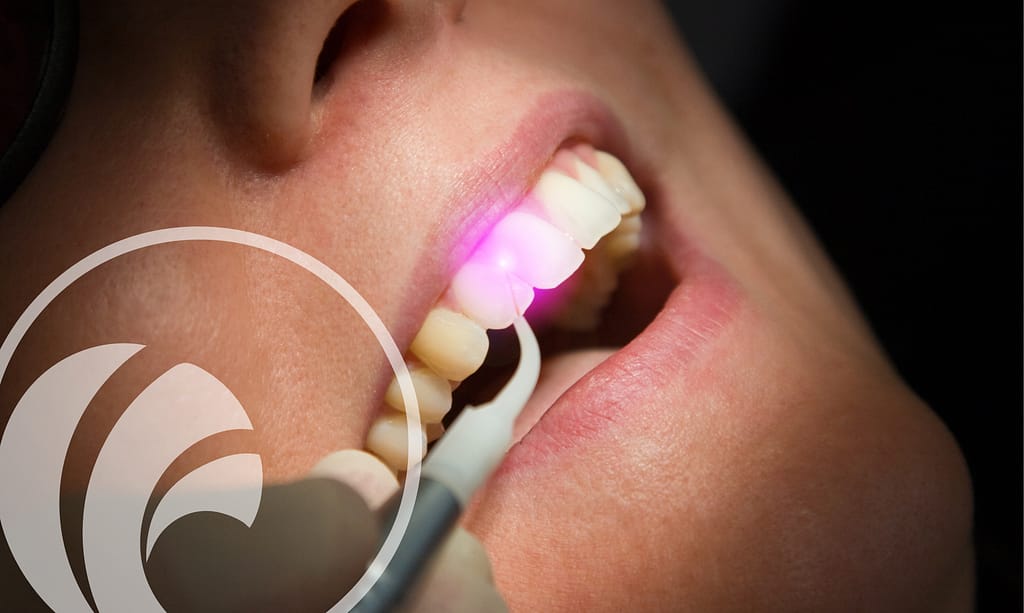Laser Precision: 5 Ways Advanced Technology Revolutionizes Gum Disease Treatment

Did you know that nearly half of adults aged 30 and above suffer from some level of gum disease? It’s a startling statistic, but it’s not something to ignore. This problem becomes even more prevalent as we age, affecting over 70% of adults aged 65 and older.
But here’s the good news: at Orchard Dental Associates, we’re changing how we treat gum disease with cutting-edge laser technology. Say goodbye to traditional treatments and hello to a brighter, healthier smile!
The Signs of Gum Disease
The American Dental Association explains that gum disease, also known as periodontal disease, can wreak havoc on your oral health. It all starts with gingivitis, the earliest stage of this disease. This condition is an infection of the tissues surrounding your teeth and is primarily triggered by plaque buildup.
Several factors increase your risk of developing gum disease, including:
- Poor oral hygiene: Neglecting regular brushing and flossing makes it easier for plaque to thrive.
- Smoking or tobacco use: Chemicals in tobacco harm your gums and overall oral health.
- Crowded teeth: When your teeth are too close, cleaning becomes a challenge, inviting gum problems.
- Certain medications: Some drugs, like steroids, specific anti-epilepsy medications, cancer therapy drugs, certain calcium channel blockers, and oral contraceptives, can increase your risk.
- Genetics: Sometimes, it’s in your genes. Some individuals are just more prone to gum disease.
- Diabetes: If you have diabetes, controlling your blood sugar is vital to prevent gum problems.
- Pregnancy: Hormonal changes during pregnancy can increase susceptibility to this disease.
Recognizing the early signs of gum disease is crucial for timely intervention and successful restorative dentistry. Keep an eye out for symptoms such as:
- Gums that bleed easily: Healthy gums shouldn’t bleed when brushing or flossing.
- Red, swollen, tender gums: Inflammation clearly indicates trouble.
- Bad breath: Despite good oral hygiene, persistent bad breath (halitosis) can indicate gum disease.
Don’t let this disease sneak up on you. Regular dental check-ups and proper oral care can help you catch and treat it early, ensuring a brighter, healthier smile for years to come.
Advanced Treatments for Gum Disease: Laser Dentistry
Technology in dentistry has been a game-changer, and laser dentistry is no exception. In the early 1990s, the Food and Drug Administration (FDA) approved lasers on gum tissue, with subsequent approval for hard tissues like teeth and the mandible bone occurring in 1996. This marked a significant milestone in the treatment of gum disease.
There are a number of different types of dental lasers, each with specific wavelengths for different applications. This versatility allows dentists to address a wide range of dental issues effectively.
Laser therapy is not a standalone treatment, but rather a powerful complement to traditional therapies. In periodontal laser therapy, a skilled periodontist employs a laser to precisely target and remove inflamed gum tissue surrounding the tooth’s root. This targeted approach is more comfortable and minimizes damage to healthy tissue.
After removing inflamed tissue, the dentist eliminates tartar and plaque buildup below and around your gumline. Rough spots on the tooth, both above and below the gumline, are smoothed out to enhance the treatment’s effectiveness further. These steps significantly reduce the likelihood of future bacterial buildup and infections.
Post-laser therapy, your mouth begins to heal. During this period, your gums can regenerate and tighten around your teeth, free from infection.
5 Benefits of Laser Dentistry for Gum Disease
Laser dentistry isn’t just the future: it’s here to transform the way we combat gum disease. These advanced techniques come with a host of advantages that make them a game-changer in oral healthcare:
1. Minimally Invasive
Laser dentistry is all about precision. The focused beam of light can target infected areas with unparalleled accuracy. This means minimal damage to healthy surrounding tissue, reducing discomfort and promoting a quicker recovery.
2. Precise and Controlled Treatment
Traditional methods may not always reach every nook and cranny. With lasers, dentists can access even the most challenging areas, ensuring thorough treatment. This precision translates to more effective results and less chance of complications.
3. Faster Healing and Recovery
Thanks to the minimally invasive nature of laser therapy, patients experience less trauma. As a result, healing and recovery times are significantly shorter compared with traditional gum surgery. You can get back to your normal routine sooner, free from gum disease’s grip.
4. Reduced Risk of Infection
Lasers not only remove infected tissue but also sterilize the area as they work. This double benefit greatly reduces the risk of post-treatment infections. You can smile with confidence, knowing your gums are on the path to a healthier state.
5. Preservation of Healthy Tissue
Traditional gum surgeries often involve cutting and stitching, leading to the removal of some healthy tissue. Laser dentistry, on the other hand, is incredibly precise, preserving more of your natural gum structure. This ensures a better aesthetic outcome and maintains the integrity of your smile.
Incorporating laser dentistry into gum disease treatment isn’t just about cutting-edge technology; it’s about delivering superior care to safeguard your oral health.
Request an appointment with Orchard Dental Associates.
At Orchard Dental Associates, we’re at the forefront of this dental evolution, using laser dentistry to improve comfort and create a better patient experience. If you’re seeking an effective and minimally invasive solution for gum disease management, don’t hesitate to take the next step.
Request an appointment with our skilled team at your trusted local family dentist in Corpus Christi, and discover how laser treatment can help you improve your oral health.